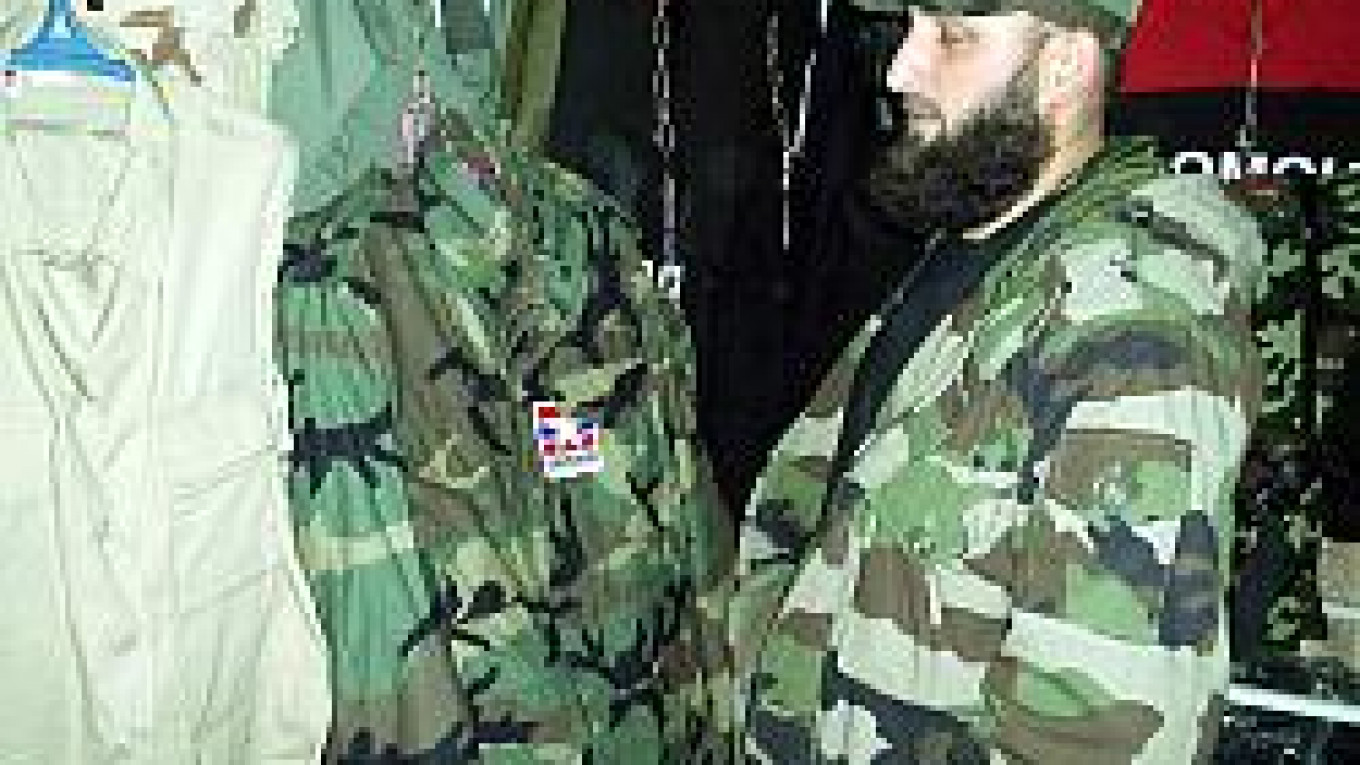Her sales are now soaring.
"There's a lot of buyers," Dzhabrailova said on a recent afternoon in her bustling store, which does not have a name. "There are individuals and even wholesale orders of 10 to 30 sets of clothes at a time."
Dzhabrailova has tapped into a huge demand in the war-ravaged region for uniforms and other military-style wear. Buyers come to her store from different branches of local law enforcement agencies, many looking for fancy knick-knacks to update their standard-issue uniforms. Ordinary men also appear to prefer military clothes to civilian wear.
The store offers a variety of military vests, straps and holsters, which Dzhabrailova imports from Turkey. Black shirts have the inscriptions on the back reading "Chechnya" and "OMON," the acronym for the riot police. Prices range from 200 rubles ($7) for a shirt to $800 for a set of four black uniform-style outfits made of Gore-Tex, a rugged windproof and waterproof material that is all the rage in Grozny these days. A military flashlight goes for 1,000 rubles.
Grozny's largest outdoor market used to have a row of stalls offering military wear, but the trade of the clothes has largely gone underground since authorities started requiring shops to get special licenses in August.
Acting Chechen Interior Minister Ruslan Alkhanov ordered the licenses after camouflage-wearing rebels killed a number of people in Grozny early that month. The rebels, claiming to be police officers, checked residents' identification papers and shot dead those working for law enforcement agencies.
Authorities have refused to say how many people were killed, but the Memorial human rights organization put the number at about 70.
Stalls at the Grozny market now sell tracksuits and army-style boots, "but we have uniforms for sale at our stall if you need them," said Marem, a vendor. Other vendors also offered uniforms under the counter.
Along with the new licensing, Alkhanov issued another order that dealt a blow to the business. He banned law enforcement agents from wearing camouflage as of Sept. 28, saying rebels preferred to wear the clothing.
The Chechen Interior Ministry issued black uniforms to the OMON and standard gray and blue uniforms to regular police officers. The special police battalions Vostok and Zapad received khaki uniforms.
The ban could be the reason why khaki uniforms, which typically sell for $350, have lost popularity, taking a back seat to black Gore-Tex pants and jackets, Dzhabrailova said. "Camouflage is out of fashion now. People chiefly wear black," she said.
One security force that appears to be defying the ban on khaki is the Chechen presidential security service, headed by First Deputy Chechen Prime Minister Ramzan Kadyrov.
A senior officer in the force, who only gave his first name, Gelani, was wearing a khaki outfit during a recent visit to Dzhabrailova's store. He wanted to find out when his order of 350 khaki uniforms would arrive.
A Message from The Moscow Times:
Dear readers,
We are facing unprecedented challenges. Russia's Prosecutor General's Office has designated The Moscow Times as an "undesirable" organization, criminalizing our work and putting our staff at risk of prosecution. This follows our earlier unjust labeling as a "foreign agent."
These actions are direct attempts to silence independent journalism in Russia. The authorities claim our work "discredits the decisions of the Russian leadership." We see things differently: we strive to provide accurate, unbiased reporting on Russia.
We, the journalists of The Moscow Times, refuse to be silenced. But to continue our work, we need your help.
Your support, no matter how small, makes a world of difference. If you can, please support us monthly starting from just $2. It's quick to set up, and every contribution makes a significant impact.
By supporting The Moscow Times, you're defending open, independent journalism in the face of repression. Thank you for standing with us.
Remind me later.


